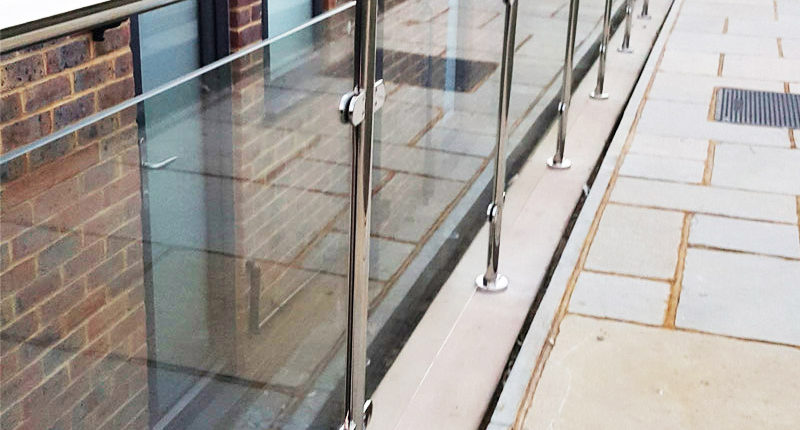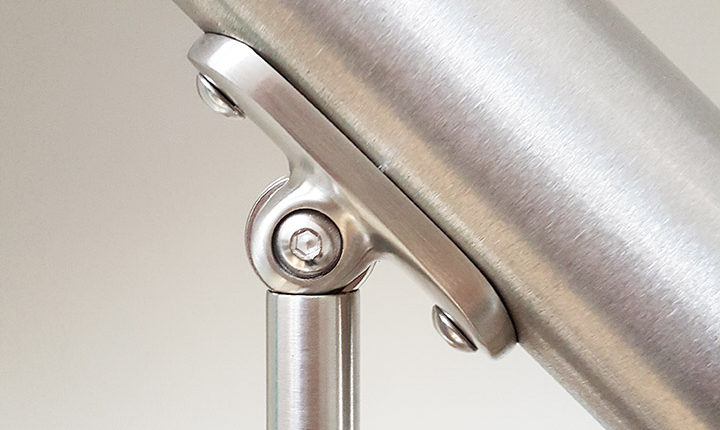When it comes to installing glass balustrades, choosing the right type of stainless steel for support structures is crucial. Glass balustrades are popular in both residential and commercial properties for their sleek, modern aesthetic and unobstructed views they provide. However, their safety and longevity heavily depend on the quality and type of stainless steel used.
This article delves into the importance of selecting the appropriate stainless steel specification, focusing on the differences between 304 and 316 grades, and compares the performance of polished versus brushed stainless steel in coastal regions.
1. Why Stainless Steel in Glass Balustrades?
Stainless steel is favored for its strength, durability, and corrosion resistance. These qualities are essential for the structural integrity and safety of glass balustrades.
The material must withstand environmental factors such as wind, rain, and salt, especially in coastal areas, while maintaining its aesthetic appeal.
2. The Differences Between 304 and 316 Stainless Steel
The primary distinction between 304 and 316 stainless steel lies in their chemical composition, particularly their content of chromium and nickel, and the addition of molybdenum in 316.
- 304 Stainless Steel: This grade contains 18% chromium and 8% nickel. It’s known for its excellent corrosion resistance to a wide range of chemicals and atmospheric environments. However, it is less effective against saline and industrial environments.
- 316 Stainless Steel: Also known as ‘marine grade’ steel, it has a similar composition to 304 but with 2-3% molybdenum. This addition significantly increases corrosion resistance, especially against chlorides and marine environments, making it ideal for coastal applications.
3. Selecting 304 or 316 for Glass Balustrades
The choice between 304 and 316 stainless steel for glass balustrades depends largely on the location:
- Inland Areas: For environments with typical urban or rural conditions, 304 stainless steel is generally sufficient and cost-effective. Although, we’d always recommended 316 grade stainless steel for exterior use
- Coastal and Harsh Environments: In areas exposed to saltwater or high chloride levels, 316 stainless steel is preferred due to its superior corrosion resistance.
See our stainless steel post balustrade range
4. Polished vs. Brushed Stainless Steel in Coastal Regions
The finish of stainless steel not only contributes to its appearance but also affects its performance, especially in coastal regions.
- Polished Stainless Steel: This finish has a mirror-like appearance. The smooth surface offers less adhesion for contaminants and can be easier to clean. This can be beneficial in resisting salt deposition in coastal areas, potentially reducing corrosion.
- Brushed Stainless Steel: Brushed steel has a duller, matte finish. While it can conceal scratches and fingerprints better than polished steel, its rougher surface can trap salts and pollutants more easily, potentially increasing corrosion risk in coastal environments.
5. Maintenance and Longevity
Regardless of the grade or finish chosen, regular maintenance is key to extending the life and appearance of stainless steel in glass balustrades. This includes routine cleaning to remove salts and pollutants, particularly in coastal areas.
Proper maintenance not only preserves the structural integrity but also the aesthetic quality of the balustrades.
Conclusion
The specification of stainless steel in glass balustrade systems is a crucial aspect of their design and installation, particularly in terms of safety, durability, and appearance. Understanding the differences between 304 and 316 grades, and considering the specific environmental conditions, particularly in coastal areas, helps in making an informed decision.
Additionally, choosing the right finish, whether polished or brushed, can significantly influence the material’s performance in challenging environments.
With proper selection and maintenance, stainless steel glass balustrades can provide a safe, durable, and visually pleasing solution for a wide range of applications.



